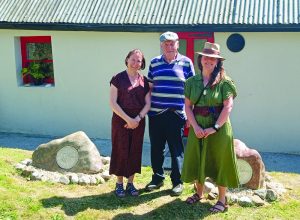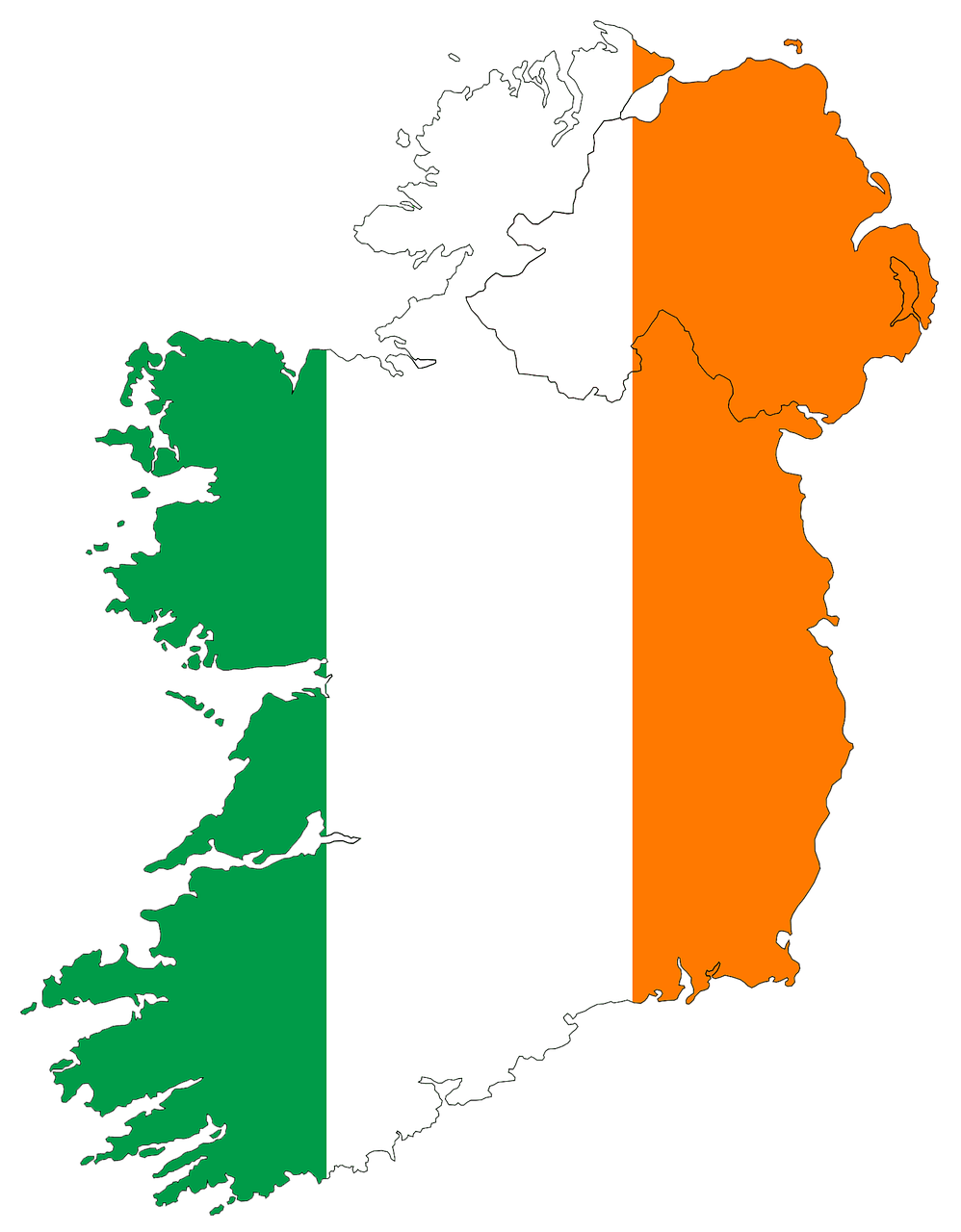
Peter Robinson Emigration ancestor Martha Mackey and her companion Annie Bolger from the USA visited Churchtown this week. They were met by Noel Linehan, Bosco Thompson and John Sampson. Martha told the Vale Star: “It was so moving to be in Churchtown and Noel, Bosco, and John were incredibly kind and welcoming”.
Martha explained that her ancestor Mary Barry was born c. 1805 in Churchtown to William Barry and Helene Welch. In 1823 Mary, along with her father, three brothers and twin sister, joined the Peter Robinson expedition to Ontario aboard the Hebe. She married Philip Boine a year after arrival. By 1834, records find Mary in Ogdensburg, New York, just over the Saint Lawrence river. By 1850, she was in Auburn, New York, where she remarried William Firth and spent the rest of her life. That line of the family remained in Auburn New York for generations and Martha’s mother was born in nearby Syracuse, New York.
Martha is in possession of a priceless family heirloom, a cameo brooch, which has been handed down and treasured by the women in her family for generations. This cameo belonged to Mary Barry, her great-grandmother’s great-grandmother, born in Churchtown. Martha further explained: “I had the great privilege to wear this prized possession on my pilgrimage to Churchtown where Mary was born. I like to think I brought her spirit with me on this journey and allowed her to return to the medieval Bruhenny graveyard where at least one Barry is buried, to see the ruins of the church, and visit Saint Brigid’s Holy Well, where I imagine she would have gone to pray. Perhaps she made a final stop there before the trek to Cobh to board the ship to Canada”.
Family lore says that the cameo was gifted to Mary Barry by a male ‘friend’ who was a commodore. Martha’s mother was of the view that the man’s name was Commodore Perry, though she has nothing to confirm this. The Perry naval family was active in the Great Lakes region at the same time as Mary arrived in Canada.
One other piece of family oral tradition is a story from Mary’s time on the frontier. She was home alone in their cabin when a native American tried to enter her home. She told him to “put a fingee in the door”. He put his finger through a hole in the door and she chopped it off! She then said, “put another fingee in the door!” Martha concluded saying: “This short story says a lot about the life the Peter Robinson participants were thrown into. They were settled in a foreign and undeveloped frontier, displacing the local natives. The oppression and displacement of one people leading to the oppression and displacement of another. Such is the story of colonialism”.
In an effort to alleviate poverty and unemployment in Ireland, and to quell Whiteboy unrest the British government sponsored a settlement of Irish emigrants in the Newcastle District of Upper Canada. Peter Robinson, later that province’s Commissioner of Crown Lands, was appointed superintendent. Over 2,000 persons sailed from Cobh and there are probably 100,000 descendants of the original settlers.
The Peter Robinson emigration to Canada that took place mainly from North Cork in the years 1823-1825 is an incredible story. The first two ships went to Ottawa in 1823 and were followed by nine ships in 1825. The nine ships went to Peterborough County and the City of Kawartha Lakes area. They arrived in Nogojiwanong, which later became Peterborough, and also settled in other locations within this area. The earlier 1823 emigrants are somewhat forgotten in Canada as they went to Ottawa but the nine ships which sailed to Ontario are very commemorated.
On 9th May last a wreath laying commemoration was held in Cobh in collaboration with Cobh Heritage, who operate the Queenstown experience, and Ballyhoura Development CLG. This important event was covered in detail on the Vale Star.
This year is the bicentenary of the Robinson emigration and two substantial events are taking place. In Ireland, the Ireland Canada Homecoming 2025 will take place over the period 15th to 21st September. It is organised by Kilfinane-based Ballyhoura Development CLG. See www.ballyhouradevelopment.com/peter-robinson-settlers-homecoming-2025.
Churchtown was a key Robinson emigration community in the North Cork area with 22 families departing between 1823 and 1825. Some of the surnames associated with the families were: Doherty, Claghanes, Barrys, Buckleys, Murphys, Hartnetts, Sheehan, Regan, Lynch, McAuliffe, Pigot and Downey. In fact, the Churchtown families were represented on eight of the eleven ships that were bound for Ottawa and Ontario valleys in the 1820s.
The main commemoration event in Canada takes place over a week starting on 1st August. If you google Nine Ships 1825 you can read all about the Canadian programme of events. Gerry Murphy will represent Churchtown Heritage Society at the Canadian events and he explained his interest to the Vale Star, as follows: “I see huge potential for North Cork genealogy-based tourism in the future and the Peter Robinson story will be central to this. The project is in good hands with Ballyhoura Development CLG where it is being managed by Amanda Slattery and the Boss Murphy Community Fund is one of many proud sponsors”.
PETER ROBINSON EMIGRATION ANCESTOR VISITS CHURCHTOWN
July 17, 2025
Featured Stories, Home Slider, Vale Star





